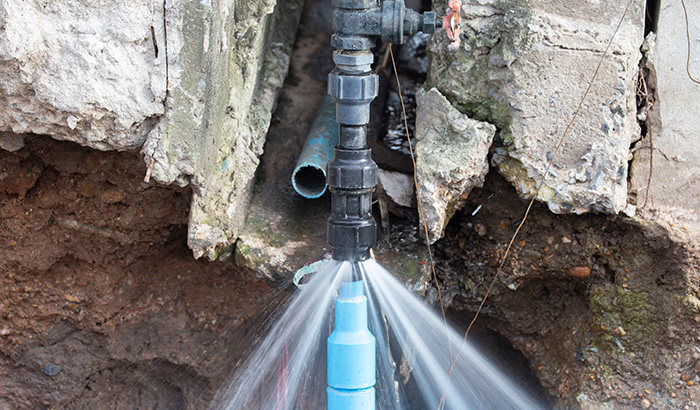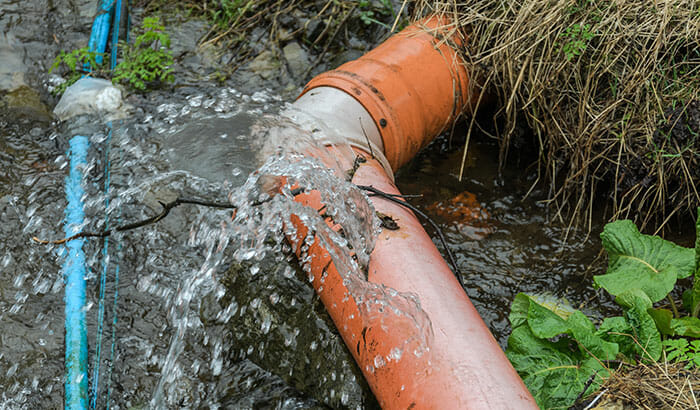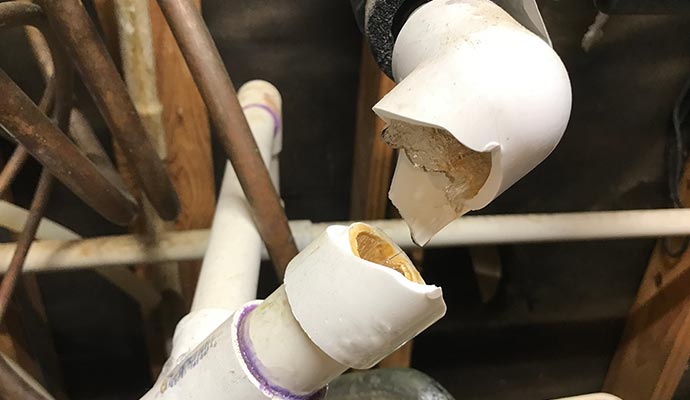How to Fix a Burst Pipe Yourself: A Step-by-Step Guide for Homeowners
Avoiding Ruptured Pipeline: Vital Tips to Secure Your Plumbing
Avoiding ruptured pipes is a vital concern for homeowners, specifically throughout cooler months when the danger of cold is heightened. Executing calculated measures such as correct insulation, routine assessments, and keeping constant interior temperatures can significantly reduce the chance of pipe failing.
Understand Pipe Vulnerabilities
Comprehending pipeline susceptabilities is vital for reliable plumbing upkeep and preventing pricey damages. A number of elements contribute to the sensitivity of pipes to ruptureds, including material structure, age, and ecological conditions. Older pipes, specifically those made from galvanized steel or polybutylene, usually weaken with time, leading to boosted risk of leaks and tears.
Temperature fluctuations can also dramatically effect pipeline stability. In chillier environments, water caught in pipelines can ice up, broadening and exerting stress on the pipe walls, which might inevitably result in a burst. High water stress can stress pipes, specifically at joints and bends, heightening the chance of failing.

Insulate Water Lines Correctly
Proper insulation of pipelines is critical for stopping cold and subsequent ruptureds throughout cold weather condition (burst pipe). Protecting your plumbing system efficiently safeguards against temperature level drops that can result in pricey damages. Begin by determining susceptible areas where pipelines are revealed to exterior temperature levels, such as cellars, attic rooms, and outside wall surfaces
Use foam pipeline insulation sleeves or wrap insulation tape around these areas to provide a safety obstacle. Ensure that all areas of the pipes, particularly those with minimal warmth direct exposure, obtain sufficient insulation. Pay unique focus to joints and installations, as these are much more susceptible to cold.
When protecting, it's vital to select products that satisfy local building regulations and are proper for the specific atmosphere. For circumstances, fiberglass insulation is typically suggested for its thermal resistance buildings - burst pipe. In addition, consider making use of warmth cords or tape in severe conditions, which can be connected in to offer supplementary warmth
Regularly examine insulated pipes for any indications of wear or damages, as compromised insulation can lessen its efficiency. By taking these proactive actions, you significantly reduce the threat of pipe ruptureds, making sure a dependable plumbing system throughout the winter season.
Maintain Constant Temperature
A steady indoor temperature level is necessary for preventing burst pipelines during the icy months. When temperature levels decline, water within pipes can freeze, producing and expanding stress that may eventually cause the pipes to ruptured. To minimize this risk, house owners ought to preserve a consistent temperature throughout their space, ideally no less than 55 ° F(13 ° C)Using a programmable thermostat can assist manage interior temperatures efficiently, making certain that areas with pipes stay warm also when your house is unoccupied. Pay special attention to areas that are much more at risk to cold, such as garages, cellars, and attic rooms. Keeping cabinet doors open under sinks can additionally permit warmer air from the home to flow around plumbing.
This minor flow of water can avoid cold by easing pressure within the pipelines. By applying these methods, house owners can significantly minimize the risk of pipe ruptureds and protect their plumbing systems against the harsh wintertime elements.
On A Regular Basis Check Pipes
Routine assessments of plumbing systems are important for avoiding burst pipelines and keeping overall home stability. During these examinations, it is essential to check out noticeable pipelines for signs of corrosion, leakages, or use.
Additionally, inspecting joints and links is crucial, as these points are usually at risk to leaks. Home owners should also evaluate water pressure degrees, as excessive pressure can strain the plumbing system and raise the risk of pipe bursts.
Consider organizing professional pipes examinations a minimum of once a year, particularly prior to winter, to ensure your system is gotten ready for chillier temperatures. Regular examinations not only assist in recognizing instant problems however likewise foster long-term maintenance methods that can enhance the lifespan of your pipes system. By being aggressive in your method, you can guard your click to read home against the turbulent and pricey repercussions of ruptured pipelines. Focusing on pipes assessments is a financial investment in your home's health and wellness.
Know Emergency Treatments
Recognizing emergency situation treatments is essential for every home owner, particularly after carrying out routine plumbing assessments. Being prepared for a plumbing emergency situation can substantially reduce damages and conserve Discover More expenses.
Next, keep important devices convenient. A pipes emergency set need to include a wrench, bettor, and towels, along with a flashlight and a bucket for little leakages. In addition, consider having the call information for a trusted plumber easily offered, needs to the circumstance escalate beyond your control.
If you detect a leak or burst pipeline, right away switch off the water system and inform your plumbing. Additionally, document the damages with photos for insurance policy objectives. burst pipe. Understand the indicators of possible plumbing problems, such as unusual water pressure variations or damp areas on wall surfaces
Ultimately, positive knowledge and quick action are important in managing plumbing emergencies, ensuring your home continues to be protected and lessening possible damage.

Final Thought
To conclude, protecting against ruptured pipelines requires a complex approach that consists of understanding pipeline vulnerabilities, correct insulation, maintaining constant indoor temperatures, regular assessments, and expertise of emergency situation procedures. By applying these necessary techniques, the threat of pipes failings can be considerably lowered, therefore click reference making sure the durability and effectiveness of the pipes system. Positive steps not only protect versus potential damage however also contribute to overall water preservation and the security of residential property.
In colder environments, water entraped in pipes can freeze, increasing and applying pressure on the pipeline walls, which may inevitably lead to a burst. When temperatures decline, water within pipes can freeze, developing and increasing pressure that might inevitably trigger the pipelines to ruptured. By executing these techniques, property owners can significantly minimize the risk of pipe ruptureds and safeguard their pipes systems against the extreme winter elements.
